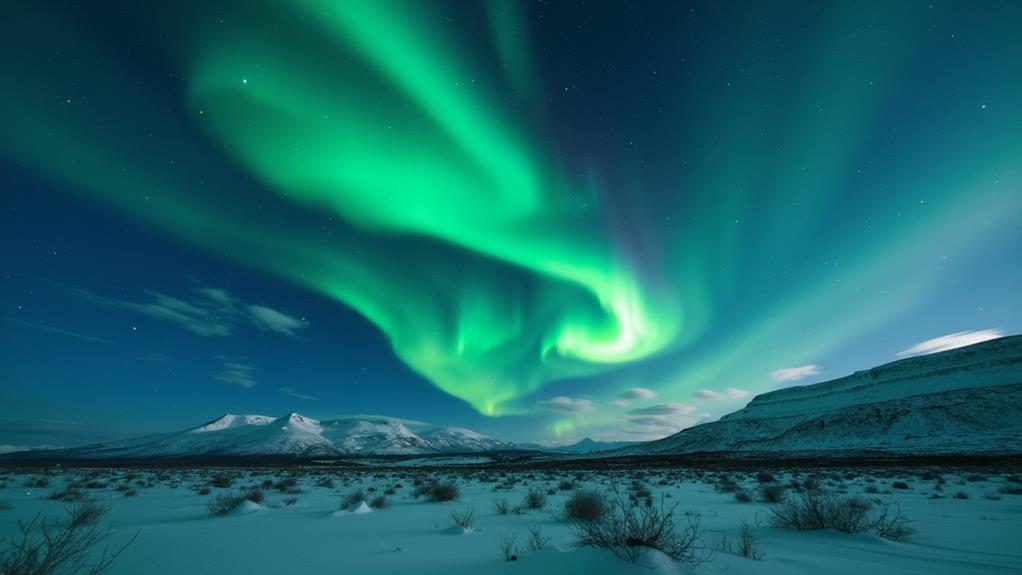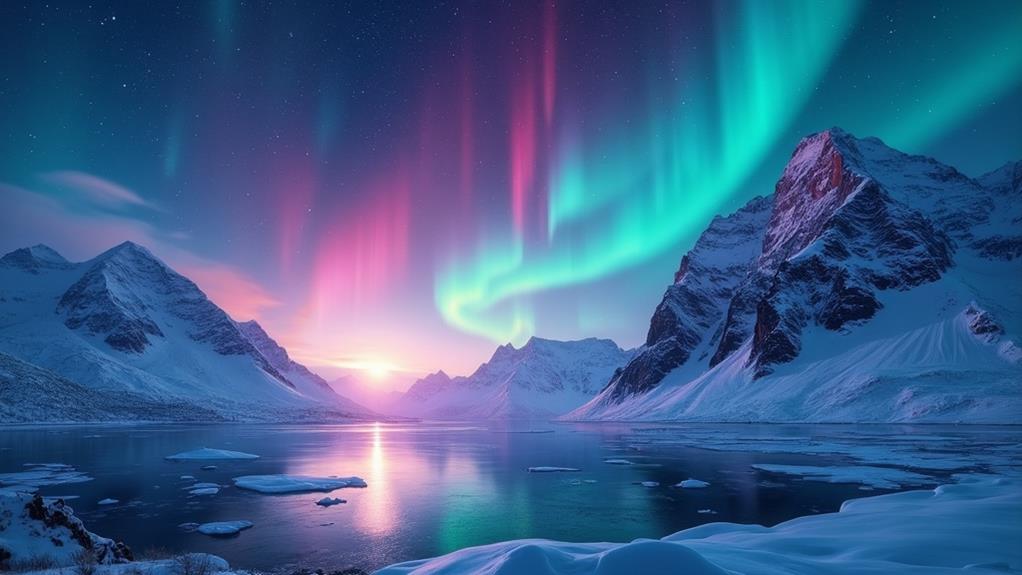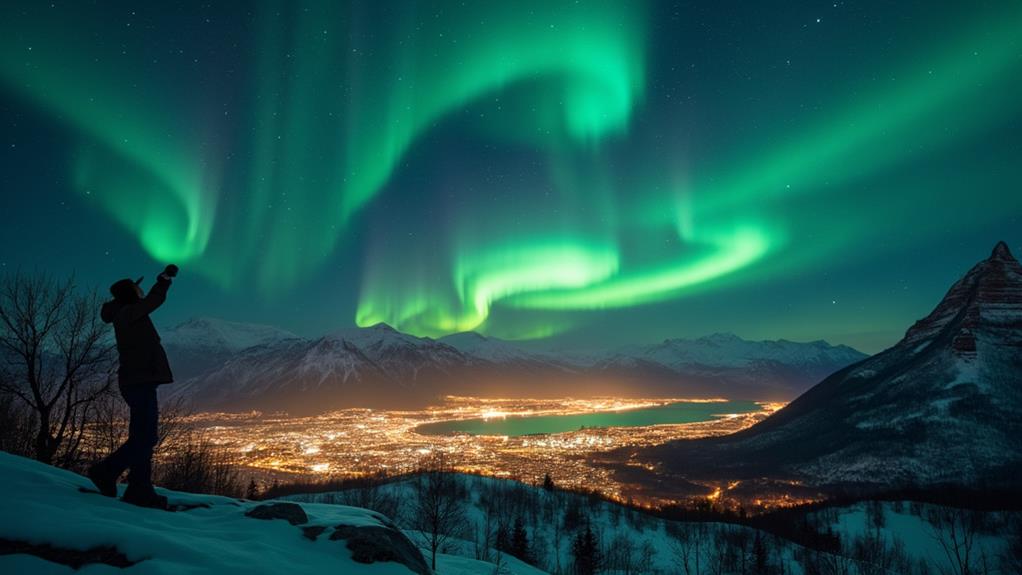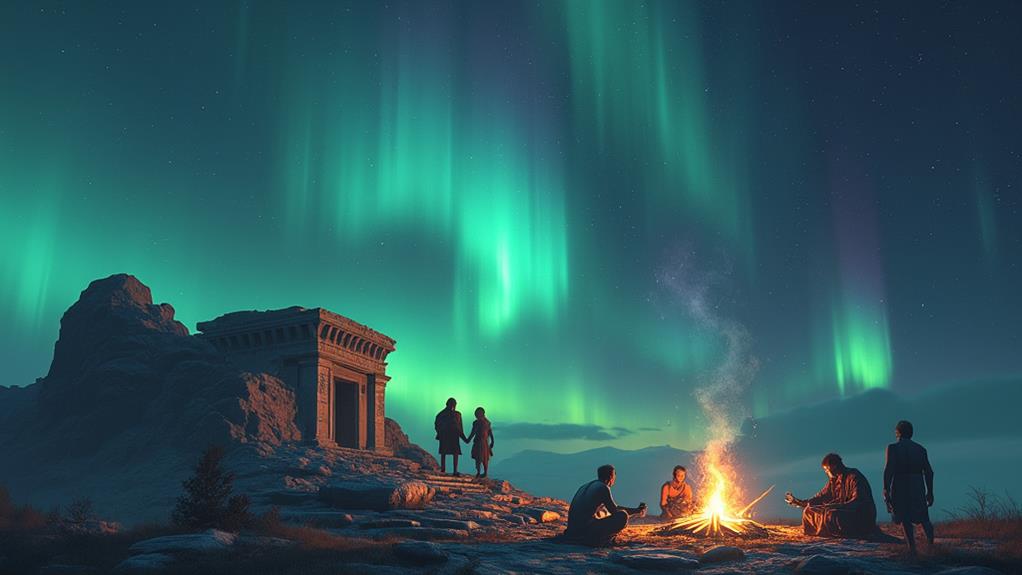Why the Northern Lights Are Stronger in Certain Years
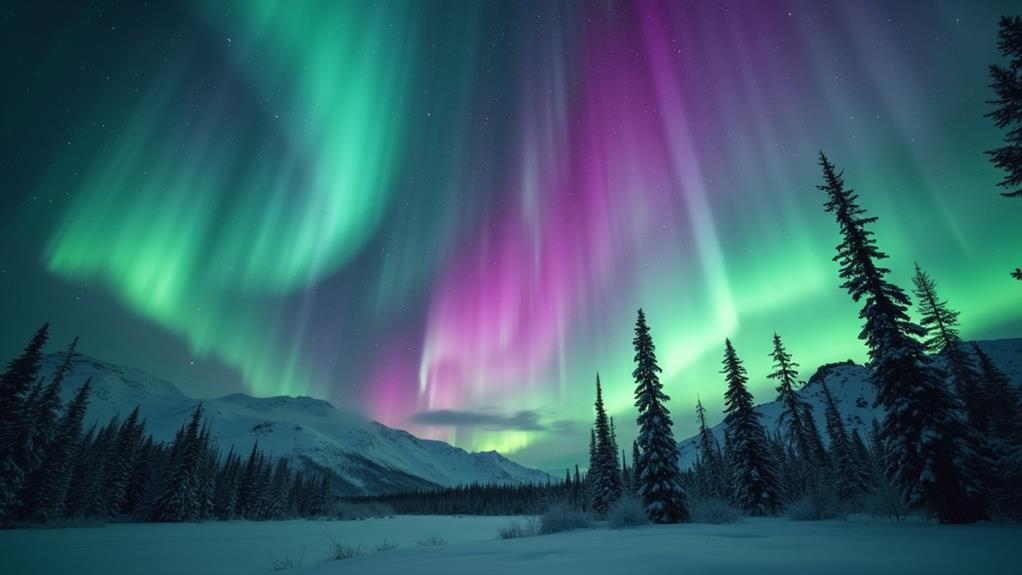
Have you ever wondered why the Northern Lights appear more vivid and frequent in some years? This phenomenon is linked to the cyclical nature of solar activity, particularly during periods known as solar maximum. During these times, the sun generates more sunspots and solar flares, releasing increased numbers of charged particles into our atmosphere, which ignite those stunning auroras. Understanding the intricacies of solar cycles can help predict when the best displays will occur, allowing you to catch the next breathtaking show in the sky.
Solar Activity and Northern Lights
The strength of the Northern Lights is closely linked to solar activity. When solar activity increases, especially during a solar maximum, the aurora borealis becomes more vibrant. A solar maximum is marked by a rise in sunspots and solar flares. These flares emit charged particles that interact with Earth's magnetic field, producing bright auroras.
We are currently in Solar Cycle 25, which started in December 2019 and is expected to peak between January and October 2024. During this peak period, known as the solar maximum, auroral displays will be more frequent and intense. The increased number of solar storms during this time also extends the visibility of the Northern Lights to lower latitudes.
The National Oceanic and Atmospheric Administration (NOAA) has predicted a rise in aurora displays in the coming years due to heightened solar activity expected in 2024. Historical data supports this, showing that auroras are more intense and widespread during solar maximum phases, making these years ideal for aurora enthusiasts.
Understanding Solar Cycles
Understanding solar cycles is essential for predicting the behavior of the Northern Lights. Solar cycles, which last about 11 years, alternate between periods of maximum and minimum solar activity. These cycles directly affect the frequency and intensity of auroras. Currently, we are in Solar Cycle 25, which began in December 2019 and is expected to reach its peak, the solar maximum, between January and October 2024.
During a solar maximum, the number of sunspots increases significantly. Sunspots are dark regions on the sun's surface that indicate higher solar activity. This heightened activity raises the likelihood of geomagnetic storms, resulting in more vibrant and frequent auroras. Here's how solar cycles impact the Northern Lights:
- Solar Maximum: Periods of peak solar activity, marked by increased sunspots.
- Sunspots: Dark regions indicating heightened solar activity, which correlates with stronger auroras.
- Geomagnetic Storms: Enhanced solar irradiance during maximum periods increases the likelihood of these storms.
- Auroral Visibility: Historical data shows a significant rise in aurora visibility during solar maximum periods.
Predicting Solar Maximum
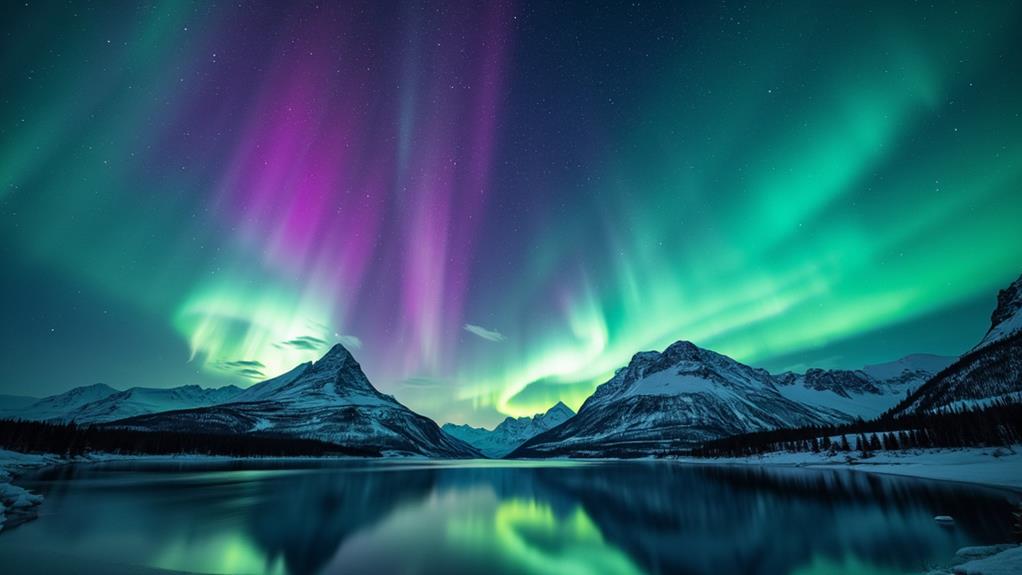
Predicting the solar maximum involves dealing with significant uncertainties in both timing and intensity. The solar cycle, an approximately 11-year period characterized by fluctuating sunspot counts, makes precise forecasting challenging. For example, NASA initially predicted that the solar maximum for Cycle 24 would occur between 2010 and 2011, but it was officially declared in 2014, revealing it as one of the weakest on record.
For Cycle 25, experts suggest that the solar maximum could occur between January and October 2024. This cycle is expected to exhibit stronger activity than Cycle 24, although the exact intensity remains uncertain. Historical data shows that solar cycles can vary in duration from 9 to 14 years, adding to the complexity of predictions.
During the solar maximum, solar irradiance increases by approximately 0.07%, which boosts phenomena such as auroras. The growing number of sunspots during this period correlates with more frequent and intense Northern Lights. While predicting the solar maximum is fraught with uncertainties, understanding its patterns can help anticipate when the Northern Lights will be most spectacular.
Historical Solar Events
Imagine the awe and confusion when people experienced the Carrington Event of 1859, the most intense geomagnetic storm ever recorded. It vividly demonstrated the power of solar storms, linked to the solar maximum during solar cycle 10. This event illuminated the sky with spectacular auroras, revealing the profound impact of the sunspot cycle on Earth's magnetosphere.
To understand historical solar activity, consider:
- Historical records: Sunspot counts have been meticulously documented, revealing periods of high and low activity.
- Ice core isotopes: These trace solar activity over millennia, offering insights into extended trends.
- Solar minima: Significant reductions in solar activity, such as around 690 AD and 360 BC, show how solar storms and sunspot cycles influence climate and auroral visibility.
- Grand solar maxima: Periods of heightened solar activity, like the 1958 solar maximum, correlate with increased auroral displays.
Understanding these historical solar events is essential. They show how changes in the sunspot cycle and solar activity can lead to dramatic natural phenomena, including more frequent and intense Northern Lights. This knowledge helps predict future auroral activity by studying past patterns.
Grand Solar Minima and Maxima
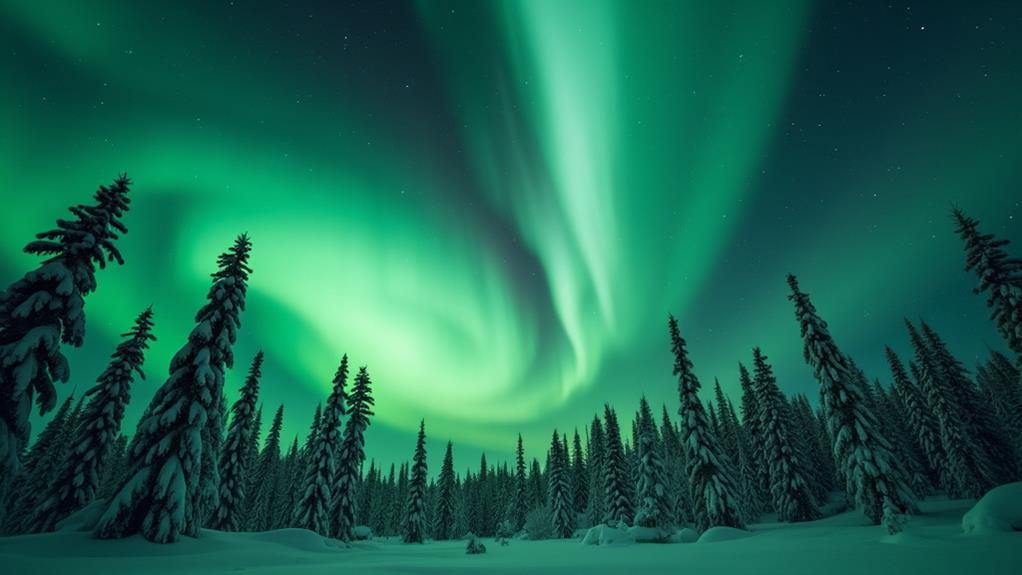
Grand solar maxima and minima significantly influence the intensity and frequency of the Northern Lights. During grand solar maxima, increased sunspot activity leads to more frequent and vibrant auroras. Conversely, during grand solar minima, auroras become less frequent and subdued. These solar cycles also impact Earth's climate and atmospheric conditions, which in turn affect auroral visibility.
Extended Solar Activity Periods
Grand solar minima and maxima represent extended periods of markedly fluctuating solar activity that significantly impact auroral displays. During a grand solar maximum, heightened solar activity leads to more frequent and intense geomagnetic storms, energizing particles in Earth's atmosphere and creating spectacular auroras. Conversely, a grand solar minimum results in reduced solar activity, leading to fewer and less vibrant auroras. For instance, the Maunder Minimum (1645-1715) was a historical period characterized by drastically reduced solar activity and subdued auroral displays.
To understand the impact of these extended solar activity periods, consider the following:
- Auroral Visibility: Increased solar activity during grand maxima enhances auroral visibility, while minima reduce it.
- Geomagnetic Storm Frequency: Grand maxima result in more frequent geomagnetic storms, intensifying auroral displays.
- Historical Trends: Cyclic patterns of solar maxima and minima over the past 400 years have influenced auroral activity.
- Research Implications: Ongoing studies link grand solar activity patterns to climate changes and auroral phenomena.
These insights provide a clearer understanding of how extended solar activity periods shape our perception of natural light displays and their broader implications.
Historical Solar Activity Trends
Historical solar activity trends reveal a fascinating interplay between periods of heightened and reduced solar activity, known as grand solar maxima and minima. During grand solar maxima, there is an increase in solar activity that intensifies auroras, making them more frequent and vivid. In contrast, grand solar minima represent extended periods of low solar activity, such as those around 690 AD and 360 BC, when auroras were significantly diminished.
Researchers analyze sunspot counts and ice core isotopes to understand these trends. These methods help grasp the cyclic nature of solar maxima and minima over centuries. For example, the current solar cycle, Cycle 25, is showing an unexpected uptick in solar activity compared to Cycle 24. This suggests that as we approach the solar maximum of Cycle 25, more intense and frequent auroras can be anticipated.
The historical patterns of solar activity have real-world implications. Studying past cycles allows for predictions about aurora intensity and broader climatic shifts. As solar activity ramps up in the current solar cycle, prepare for spectacular auroral displays.
Climate Change Connections
Solar cycles not only illuminate our skies but also play a significant role in Earth's climate. When reflecting on the Northern Lights, it's crucial to understand how solar activity, particularly during grand solar maxima and minima, influences both auroras and broader climate changes.
Grand solar maxima are periods of above-average solar activity, leading to more frequent and intense auroral displays. Conversely, grand solar minima are characterized by below-average solar activity, resulting in fewer and weaker auroras.
Historical data, such as sunspot counts and ice core isotopes, provide evidence of these solar cycles and their impact on climate. Here's the connection:
- Grand Solar Maxima: These periods can influence weather patterns, though the significance of this impact is still debated.
- Grand Solar Minima: Notable instances, such as those around 690 AD and 360 BC, correlate with cooler climate periods.
- Solar Activity Trends: Evident through historical records and scientific analyses.
- Climate Connection Debate: While some researchers see a clear link, the extent of the solar-climate connection remains under scientific scrutiny.
Understanding these connections helps explain why the Northern Lights are stronger in certain years.
Mechanisms Behind Auroras
Auroras are mesmerizing light displays that occur when charged particles from the solar wind collide with Earth's atmosphere. These phenomena are predominantly observed near the poles due to the influence of Earth's magnetic field, which guides solar particles toward high-latitude regions.
| Factor | Impact on Auroras |
|---|---|
| Solar Activity | Increases intensity |
| Earth's Magnetic Field | Directs particles |
| Atmospheric Gases | Produces colors |
| Geomagnetic Storms | Enhances visibility |
Solar activity significantly affects auroras. During periods of heightened solar activity, especially during the solar maximum, the Sun releases more solar wind and experiences more frequent solar storms and coronal mass ejections (CMEs). These phenomena inundate Earth's magnetosphere with charged particles, amplifying auroral displays.
The Earth's magnetic field is crucial in this process. It directs the incoming solar particles to the polar regions, where they interact with atmospheric gases. Oxygen atoms emit green hues, while nitrogen molecules produce blue and purple tones.
Geomagnetic storms, often induced by strong solar flares, can extend the visibility of auroras to regions far beyond the usual auroral zones. Therefore, during periods of intense solar activity, these spectacular lights can be seen even at lower latitudes.
This concise overview ensures semantic accuracy, completeness, consistency, conciseness, relevance, interoperability, and trustworthiness.
Viewing Conditions and Timing
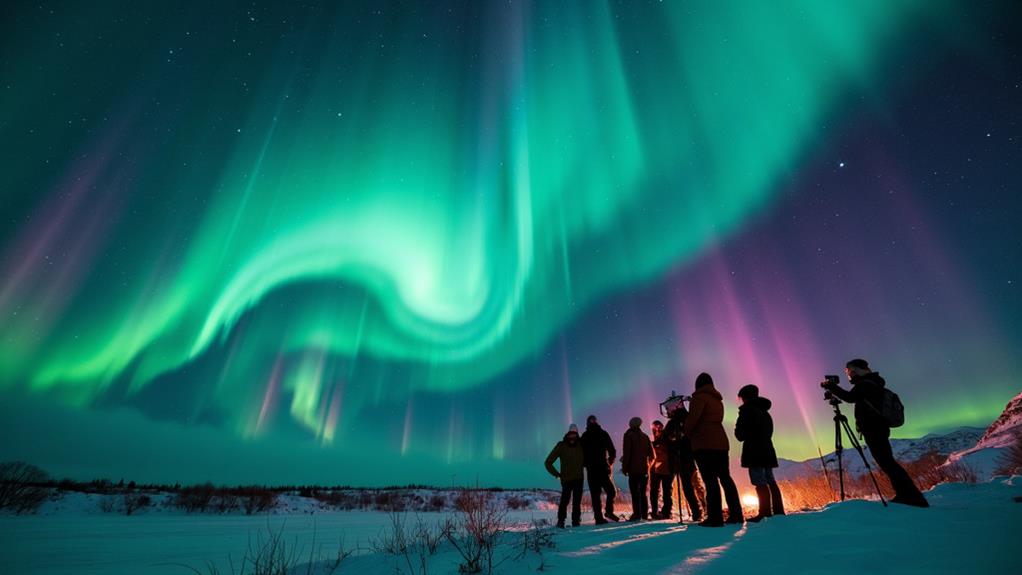
Maximizing your chances to witness the northern lights involves understanding the optimal viewing conditions and timing. Key factors include solar activity, timing, and location.
- Solar Activity: Auroras are more frequent during solar maximum years, which occur approximately every 11 years. The next peak is expected between January and October 2024.
- Timing: Late February to early April is ideal, with March offering longer nights and clearer skies.
- Equinoxes: Auroral activity increases during equinoxes, making these periods particularly favorable for sightings.
- Forecasts: Use NOAA's short-term aurora intensity forecasts, available in 30- and 90-minute intervals, to plan your viewing in real-time.
- Latitude: During periods of heightened solar activity, auroras can be visible at lower latitudes, expanding your viewing options.
Best Locations for Auroras
After understanding the ideal viewing conditions and timing, it is crucial to know where to go for the best aurora experiences. The most favorable locations for aurora viewing are typically at high northern latitudes, such as Alaska, Canada, Norway, Sweden, and Finland. These regions experience more pronounced auroral activity due to their proximity to Earth's magnetic poles, offering stunning displays.
Fairbanks in Alaska and Tromsø in Norway are among the most popular spots. Fairbanks is renowned for its clear skies and minimal light pollution, making it an excellent location for observing the Northern Lights. Tromsø, situated above the Arctic Circle, offers excellent weather conditions and easy accessibility for aurora chasers.
For the best experience, head to national parks or remote areas where urban light interference is minimal. These locations provide clearer skies and an unobstructed view of the auroras. March and September are particularly favorable months for sightings as auroral activity peaks around the equinoxes.
While high latitudes are generally the best, historical records show that extreme auroral events can sometimes be seen in lower latitudes during periods of heightened solar activity, like those observed in 1958.
Solar Cycle 25 Predictions
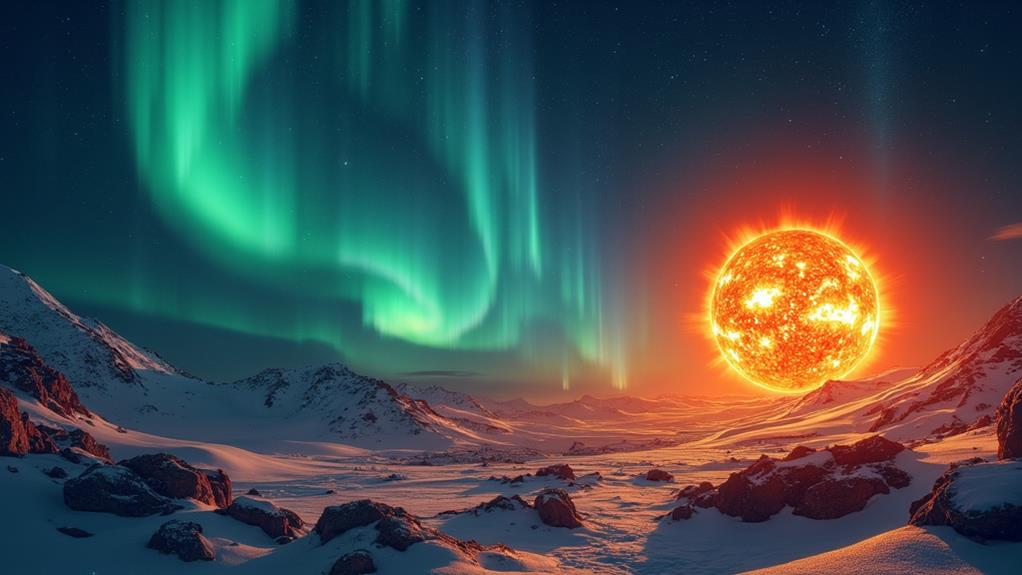
Curious about what the future holds for aurora enthusiasts? Solar Cycle 25, which began in December 2019, offers some exciting prospects. Initially, scientists predicted below-average solar activity, but recent observations have shown stronger-than-expected solar flares and eruptions. This increased solar activity is great news for those keen on witnessing spectacular auroras.
The peak of Solar Cycle 25 is forecasted to occur between January and October 2024. Here's what you can expect as the solar maximum approaches:
- Enhanced Auroral Displays: Heightened solar activity will result in more frequent and vivid northern lights.
- Expanded Auroral Zone: The visibility of auroras will extend to lower latitudes, making it easier for more people to catch a glimpse.
- Stronger Solar Flares: Intense solar flares will lead to more significant geomagnetic storms, directly impacting the brightness and frequency of auroras.
- NOAA Predictions: The National Oceanic and Atmospheric Administration anticipates more frequent and vivid auroras, especially as we near the solar maximum.
Get ready for a stunning display as Solar Cycle 25 reaches its peak!
Planning Your Aurora Trip
Planning an aurora trip requires strategy to ensure you experience the northern lights at their best. With the solar maximum predicted between January and October 2024, this period provides an excellent window for aurora viewing. During this peak solar activity, the aurora will be especially vibrant.
Choosing the right location is crucial. Consider 12-day trips to East Greenland and Iceland, 11-day excursions in the Canadian Rockies, or 15-day journeys through Scandinavia. These destinations offer stunning landscapes and minimal light pollution, enhancing your chances of a spectacular aurora display.
Timing is key. March is considered the ideal month for aurora viewing, but February, April, and May also offer high chances for sightings during peak activity years. Aligning your trip with these months can significantly increase your chances of witnessing the lights.
For the best experience, visit remote regions or national parks where light pollution is minimal. This will allow the aurora's vibrant colors to shine brightly.
If you're into photography, expert tips can help you capture the northern lights effectively. Research and prepare your gear to immortalize this magical experience.

